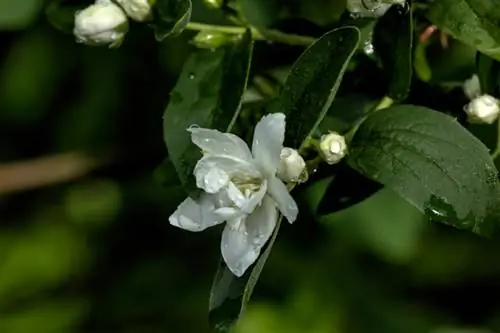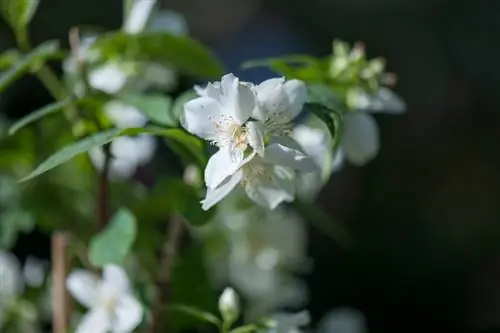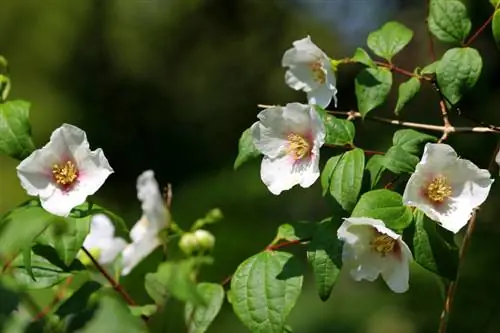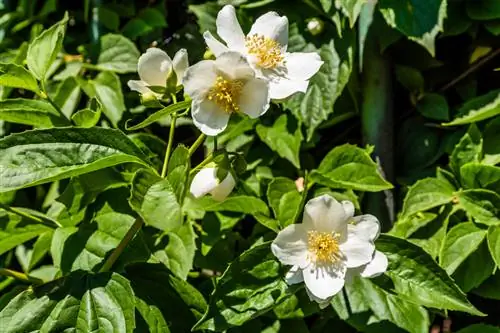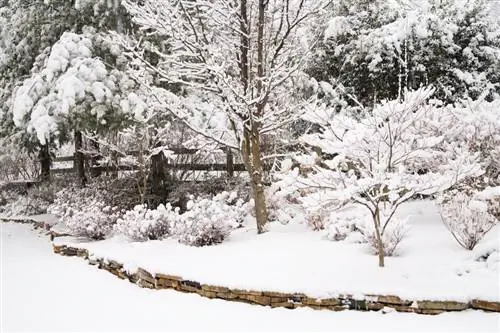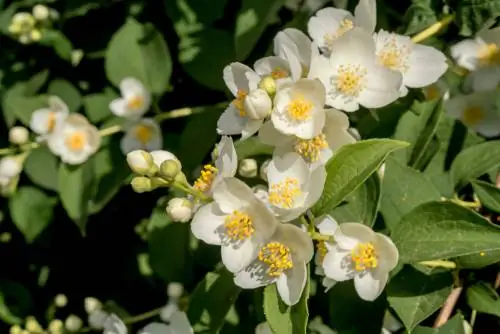- Author admin [email protected].
- Public 2023-12-16 16:46.
- Last modified 2025-01-23 11:20.
The pipe bush, also called false jasmine or farmer's jasmine, is a native shrub that requires virtually no care. You should only care for the ornamental shrub, which is not always non-toxic, in the first few years so that it grows well in its location.

How do I properly care for a pipe bush?
Caring for the pipe bush is easy: water and fertilize regularly in the first few years and avoid waterlogging. Pruning is not absolutely necessary, but can be done after flowering. The shrub is hardy and robust, but susceptible to black bean lice.
How should the pipe bush be watered?
In the first few years, the pipe bush should be watered more frequently so that the soil never completely dries out. However, waterlogging must be avoided.
Over the years, occasional watering is completely sufficient.
If the bush has been in the same place for many years, it takes care of itself.
Do pipe bushes need regular fertilizer?
Pipe bushes prefer slightly clayey, nutritious soil. But they thrive on almost all soils that are not too sandy or too firm.
Before planting, you should mix some mature compost (€12.00 on Amazon) or horn shavings into the potting soil.
In the early years, you can fertilize the shrub in spring. Use fertilizer that contains little nitrogen. If there is too much nitrogen, the shrub will develop a lot of leaves but no flowers.
When do the ornamental shrubs need to be cut?
In principle, it is not necessary to cut pipe bushes. If cutting is done, then immediately after flowering. The shrub can
- put into shape
- cut back
- tapered or
- lighted out
become. For propagation, shoot tips can be cut as cuttings after flowering.
What pests can occur?
Black aphids, especially the black bean louse, occasionally attack the pipe bush.
Therefore, if possible, never plant puffballs and viburnums near pipe bushes.
The larvae of the black bean louse overwinter on the bushes mentioned. They move to the pipe bush in summer and sometimes form a dense infestation there.
What diseases do pipe bushes suffer from?
Diseases almost never occur in the pipe bush.
Is the pipe bush hardy?
In contrast to real jasmine, the pipe bush is completely hardy. It can do without any winter protection, even when temperatures drop to -30 degrees.
Tip
The pipe bush thrives in the sun and partial shade. The ornamental shrub is so robust that it occasionally even grows under walnut trees, where hardly any other plant has a chance.

